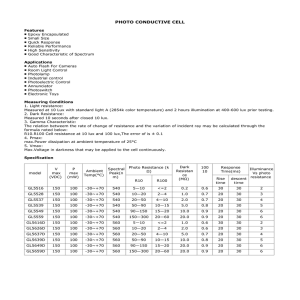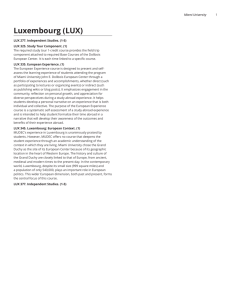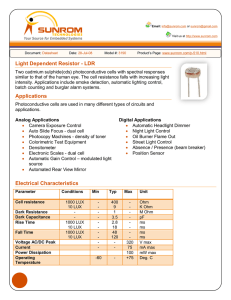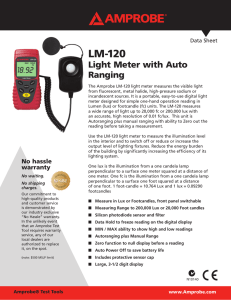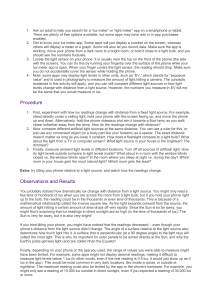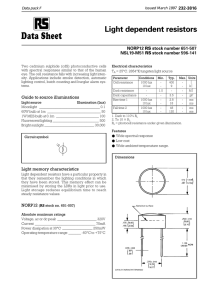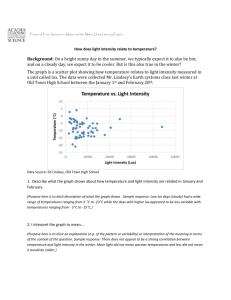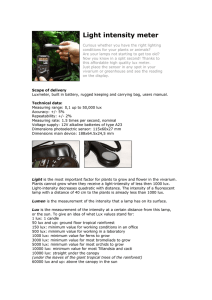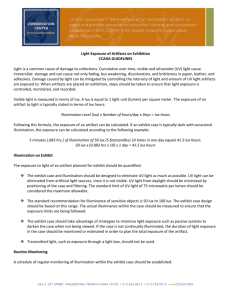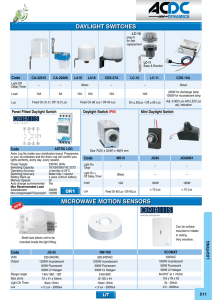How to Use a Lux Meter
advertisement
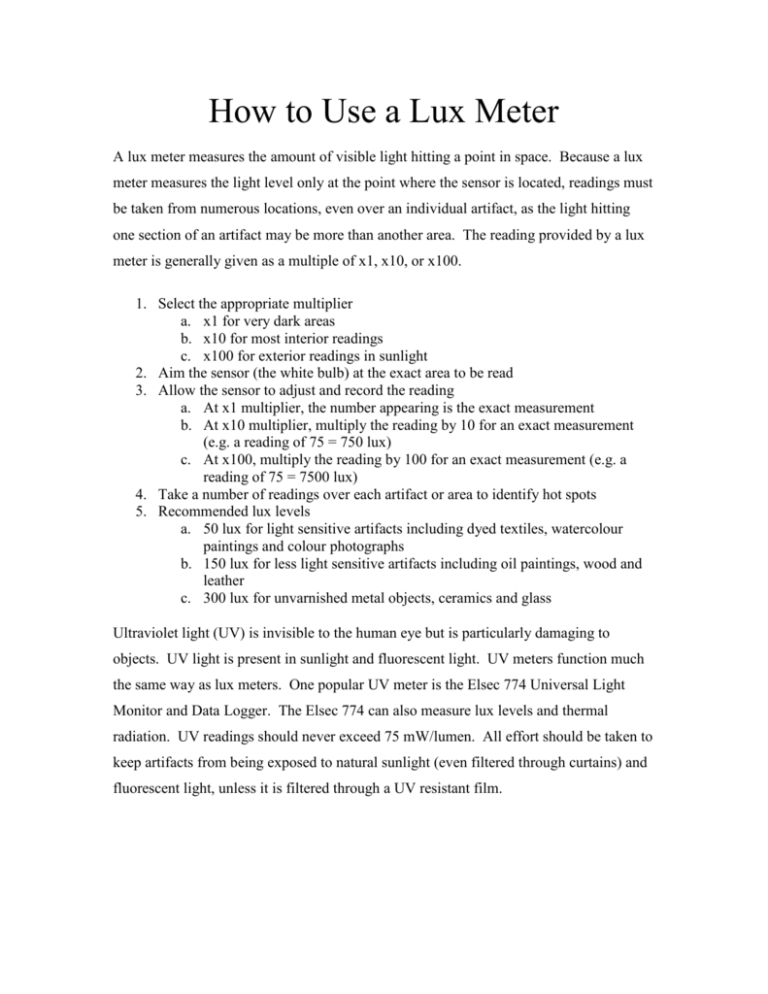
How to Use a Lux Meter A lux meter measures the amount of visible light hitting a point in space. Because a lux meter measures the light level only at the point where the sensor is located, readings must be taken from numerous locations, even over an individual artifact, as the light hitting one section of an artifact may be more than another area. The reading provided by a lux meter is generally given as a multiple of x1, x10, or x100. 1. Select the appropriate multiplier a. x1 for very dark areas b. x10 for most interior readings c. x100 for exterior readings in sunlight 2. Aim the sensor (the white bulb) at the exact area to be read 3. Allow the sensor to adjust and record the reading a. At x1 multiplier, the number appearing is the exact measurement b. At x10 multiplier, multiply the reading by 10 for an exact measurement (e.g. a reading of 75 = 750 lux) c. At x100, multiply the reading by 100 for an exact measurement (e.g. a reading of 75 = 7500 lux) 4. Take a number of readings over each artifact or area to identify hot spots 5. Recommended lux levels a. 50 lux for light sensitive artifacts including dyed textiles, watercolour paintings and colour photographs b. 150 lux for less light sensitive artifacts including oil paintings, wood and leather c. 300 lux for unvarnished metal objects, ceramics and glass Ultraviolet light (UV) is invisible to the human eye but is particularly damaging to objects. UV light is present in sunlight and fluorescent light. UV meters function much the same way as lux meters. One popular UV meter is the Elsec 774 Universal Light Monitor and Data Logger. The Elsec 774 can also measure lux levels and thermal radiation. UV readings should never exceed 75 mW/lumen. All effort should be taken to keep artifacts from being exposed to natural sunlight (even filtered through curtains) and fluorescent light, unless it is filtered through a UV resistant film.
